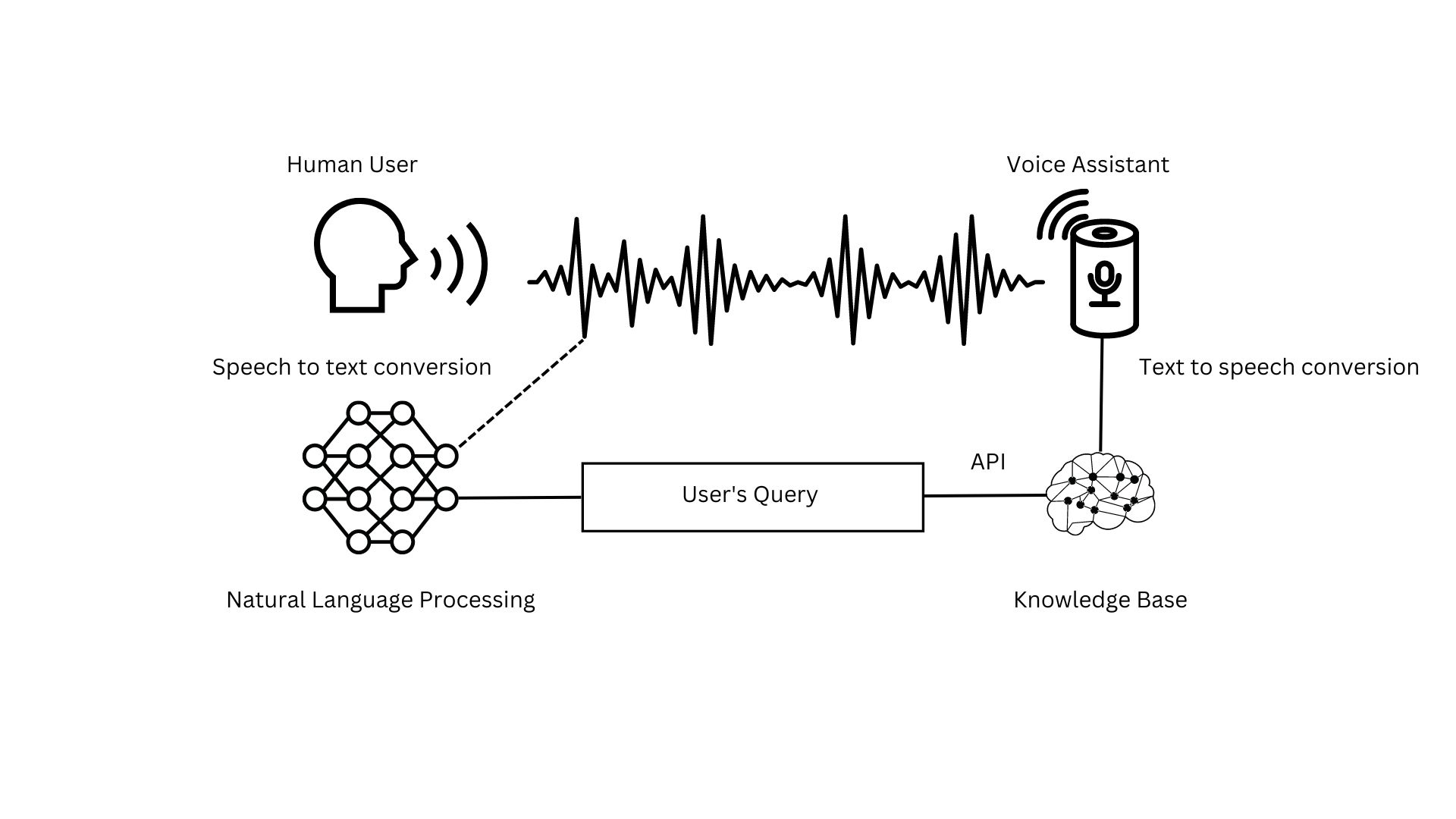Building Voice Assistants Made Easy: OpenAI's Latest Advancements

Table of Contents
OpenAI's APIs for Streamlined Voice Assistant Development
OpenAI offers a suite of powerful APIs designed to simplify the development of voice assistants. These APIs handle the complex tasks of speech-to-text conversion and natural language understanding, allowing developers to focus on the unique aspects of their applications.
Whisper API for Accurate Speech-to-Text Conversion
OpenAI's Whisper API is a game-changer for speech recognition. Its ability to accurately transcribe speech in multiple languages, even in noisy environments, is unparalleled. Whisper's robustness makes it ideal for diverse applications, from customer service chatbots to transcription services. Integration is remarkably easy, requiring minimal code.
Here's a basic Python example demonstrating Whisper's use:
import openai
openai.api_key = "YOUR_API_KEY"
transcript = openai.Audio.transcribe("whisper-1", open("audio.mp3", "rb"))
print(transcript["text"])
- Multi-lingual support: Whisper supports numerous languages, expanding the reach of your voice assistant.
- High accuracy: Its advanced algorithms deliver highly accurate transcriptions, even with background noise.
- Open-source availability: The underlying model is open-source, fostering community contributions and improvements.
- Easy integration: Simple APIs make integration into existing projects straightforward. Whisper's accuracy improvements compared to previous solutions are substantial, leading to more reliable and user-friendly voice assistant experiences.
GPT Models for Natural and Engaging Conversations
The conversational heart of any voice assistant relies on powerful NLP models, and OpenAI's GPT models excel in this area. These pre-trained models understand context, generate natural-sounding responses, and learn from interactions to improve over time. Using pre-trained models eliminates the need to train models from scratch, significantly reducing development time and cost.
You can further customize these GPT models to suit the specific needs of your voice assistant, tailoring responses to particular domains or applications. Prompt engineering techniques play a crucial role in optimizing the voice assistant's performance, ensuring it provides relevant and helpful responses.
- Pre-trained models: Leverage powerful, pre-trained models to jumpstart your development.
- Customization options: Adapt GPT models to specific applications and domains for enhanced performance.
- Contextual understanding: GPT models grasp context for more meaningful and nuanced conversations.
- Natural language generation: Generate human-like text for engaging and natural interactions.
Reduced Development Time and Cost with OpenAI's Tools
OpenAI's tools dramatically reduce the time and resources required for voice assistant development. This is achieved through pre-built components, efficient infrastructure, and easy deployment options.
Pre-built Components and Libraries
OpenAI provides various pre-built components and libraries that significantly reduce the amount of coding required. These ready-made elements handle essential tasks, such as speech recognition, natural language understanding, and text-to-speech conversion. This drastically accelerates the development process, allowing developers to focus on the unique functionalities of their voice assistants. For instance, readily available components might include dialogue management systems or intent recognition modules.
- Faster development: Accelerate development cycles with pre-built components.
- Lower costs: Reduce development expenses by leveraging existing tools and resources.
- Reduced complexity: Simplify the development process by focusing on core functionalities.
- Pre-built integrations: Seamlessly integrate with other services and platforms.
Scalability and Ease of Deployment
OpenAI's cloud infrastructure ensures your voice assistant can easily scale to meet increasing demand. Deployment and maintenance are simplified using OpenAI's cloud services, eliminating the need to manage your own infrastructure. This approach is significantly more cost-effective than building and maintaining your own infrastructure, offering a robust and reliable solution.
- Scalable infrastructure: Handle increasing user demands without performance issues.
- Easy deployment: Deploy your voice assistant quickly and easily using OpenAI's services.
- Cost-effective solution: Reduce infrastructure costs by leveraging OpenAI's cloud services.
- Reliable performance: Benefit from OpenAI's robust and highly available infrastructure.
Real-World Applications and Use Cases of OpenAI-Powered Voice Assistants
OpenAI-powered voice assistants are transforming various industries, improving user experiences and operational efficiency.
Examples in Various Industries
The versatility of OpenAI's tools allows for seamless integration into diverse sectors:
- Healthcare applications: Voice assistants can assist doctors with record-keeping, provide patient information, and even offer basic medical advice.
- Financial services: Voice assistants can help users manage accounts, make transactions, and access financial information securely.
- Education technology: Interactive voice assistants can personalize learning experiences and provide tutoring assistance.
- Smart home devices: Voice-controlled home automation systems are becoming increasingly prevalent.
Future Trends and Potential
The future of OpenAI-powered voice assistants is bright, with ongoing advancements promising even more sophisticated and user-friendly applications.
- Improved accuracy: Expect further improvements in speech recognition and natural language understanding accuracy.
- Enhanced personalization: Voice assistants will learn individual preferences and adapt their responses accordingly.
- Multimodal interaction: Integration with other modalities, such as images and gestures, will enhance interaction.
- Increased accessibility: Voice assistants will become increasingly accessible to users with disabilities.
Conclusion
OpenAI's latest advancements have significantly lowered the barrier to entry for building sophisticated voice assistants. Through its powerful APIs, pre-built components, and scalable infrastructure, developers can now create innovative and engaging voice experiences with unprecedented ease and efficiency. The potential applications are vast and continue to expand.
Call to Action: Ready to build your own cutting-edge voice assistant? Explore OpenAI's resources and start building today! Learn more about OpenAI's tools for easy voice assistant development and unlock the potential of conversational AI.

Featured Posts
-
 Dodgers Minor League System A Focus On Kim Outman And Sauer
May 15, 2025
Dodgers Minor League System A Focus On Kim Outman And Sauer
May 15, 2025 -
 Euforias Deleznables Experiencias Y Sensaciones Inolvidables
May 15, 2025
Euforias Deleznables Experiencias Y Sensaciones Inolvidables
May 15, 2025 -
 Calvin Klein Euphoria Perfume Sale Find Your Fragrance At Nordstrom Rack
May 15, 2025
Calvin Klein Euphoria Perfume Sale Find Your Fragrance At Nordstrom Rack
May 15, 2025 -
 Ms V Hokeji Svedi S Hvezdnou Nhl Sestavou Cesi Hraji S Nemeckem
May 15, 2025
Ms V Hokeji Svedi S Hvezdnou Nhl Sestavou Cesi Hraji S Nemeckem
May 15, 2025 -
 Rockets Warriors Game 4 Nba Fans Response To Jimmy Butlers Injury
May 15, 2025
Rockets Warriors Game 4 Nba Fans Response To Jimmy Butlers Injury
May 15, 2025
